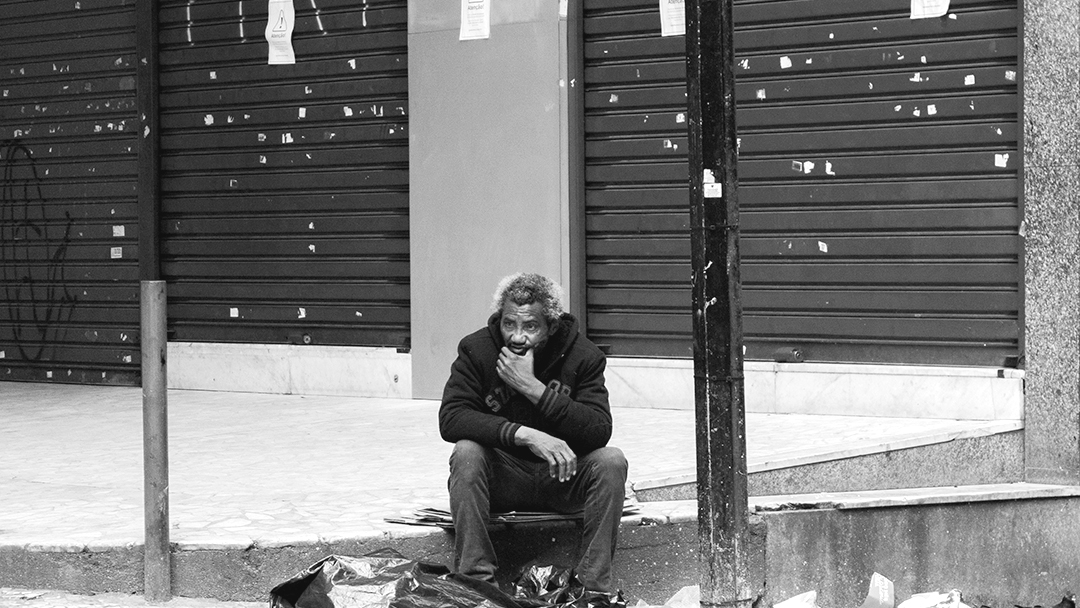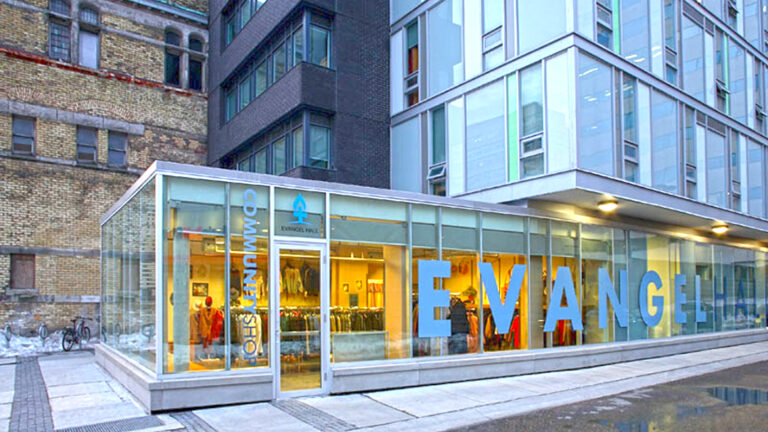Curious about the eviction landscape in Toronto, Scott Leon, researcher at the Wellesley Institute, has found that some neighbourhoods have record rates of 1 eviction filing per 4 residents—a shocking number, with a strong racial bent.
 Interview with Scott Leon, Co-Author of Forced Out: Evictions, Race, and Poverty in Toronto.
Interview with Scott Leon, Co-Author of Forced Out: Evictions, Race, and Poverty in Toronto.
Evictions and Homelessness
For the last 3 years, I’ve been working on a joint project with CAMH, Wellesley Institute, and a number of youth shelters in town, supporting youth as they transition out of homelessness: within the first year of being rehoused, 70% of them were falling back into homelessness. I spoke to 160 youth for over 300 hours, doing interviews about these transitions and I saw this intense effort being put in, by the social workers and the mental health hospitals, into helping youth getting housed, and seeing preventable evictions—like minor conflicts and amounts of arrears—knock it all away. These evictions or threats of evictions lead to youth being back in shelters: they do not have money for first and last, and they’re back in a spell of homelessness. This really got me interested in what is going on with evictions in Toronto. And there wasn’t a lot of recent research about the subject, so we decided to dig deeper.
The Study at a Glance
Our research has shown that in an average year there are about 20,000 formal eviction filings in Toronto. That is 5 formal eviction filings for every 100 renter households. And this varies across the city. The city average is 1 in 20. When you get to higher hit neighbourhoods, it becomes 1 in 4. If you start looking at Weston, Black Creek, communities across Jane Street, these neighbourhoods have higher rates of eviction filing. The Palisades buildings at the north-east corner of Jayne and Finch, there are about 700 housing units, and some years, they’ve had about 350 formal eviction filings. That’s 1 in 2. That’s a huge number. Let’s not forget what we’re looking at here is eviction filings, and these trigger a hearing, and can, though do not always, result in an eviction or forced move. We’re not looking at all the informal and illegal evictions, where people are forced out without ever getting a hearing.
Evictions: Formal, Informal, Illegal
The eviction process often starts with an eviction notice: it can be filled in professionally, using an official notice, but often it is a verbal threat, or a letter, or a posted note left on the door. Some tenants move out from these threats, even when they are not legally required to: many informal and illegal evictions happen like this. I did some research in Parkdale years ago, and we saw this disproportionately affect lower-income workers but especially people, and families, who didn’t have English as a first language, who were recent immigrants: after all, how are they supposed to know the intricacies of their rights and the housing situation, especially when they are juggling work, and childcare, and other things in their lives. It can even be people moving inter provincially—the differences in the rental market and the processes can be quite significant.
Eviction and Race
This study highlights the stark disparities in eviction filings across Toronto. Eviction filing rates were twice as high in neighbourhoods where more low-income renters live. Independent of this association, we also find that Toronto has a racialized eviction problem—and this even when controlling for things like poverty. Going back to our own analyses, we try to control for these different variables: hypothetically, say you kept renter poverty the same across neighbourhoods, and you looked at just the black renter households in these communities, and you held everything else the same: age, gender, immigration status, then what happens when you look at the data, is that evictions rates double as the percentage of Black renter households increases. There is a clear linear line, and that to me, suggests racial discrimination—individual, subconscious and conscious, anti-black racism—but also systemic racism. My interpretation is that this is another facet of a system that creates and perpetuates worst outcomes for racialized populations in Toronto. In fact, every study that I know of that has looked into racism and discrimination in rental housing in Toronto has found significant racism.
Evictions in the Time of COVID-19
Some of the neighbourhoods hardest hit by evictions are also hardest hit by COVID-19. Addressing evictions in Toronto must be done through a clear policy action, for at least 3 reasons: to address the significant racial disparity in eviction filing, to avoid an increase in homelessness—which is often caused by eviction—and because our pandemic response is at risk. A common response when people are evicted is to move in with family or friends at least temporarily, this often means sleeping on the couch or doubling up, or even tripling up in an apartment. And there is very clear evidence that overcrowding in housing leads to the spread of infectious disease. It shows that evictions are not just affecting the people who are being evicted. They are impacting family members, and homeowners, and communities, and it branches out and has cascading impacts. Avoiding eviction at its source really avoids this downstream fallout.
Evictions and Subsidized Housing
There is a promising association: as social and non-profit housing increases in a census tract, eviction filing rates are significantly lower. This really shows that these are promising policy directions, and it signals that building, acquiring, and developing a robust non-market housing sector is expected to decrease the eviction filing rates in our city. Successful social housing around the world has very low-income people in it, yes, but also modest, and middle-income people in it. A mixed income model. Providing reasonable priced housing for a wide swath of society. Although there is a move towards this direction, that is not really the system we have in place in Toronto, though some coops and non-profits have a higher income mix.
Housing as the Defining Issue of Our Generation
Housing has been a passion of mine since the 2008 recession: it really informed my values, my principles, my research outlook and my interest. Seeing the housing market collapse, the foreclosures, and evictions. And then in the subsequent recovery, seeing the housing crisis smoulder and get worse. Even then, we’ve had this longstanding housing crisis that affected low-income workers in Canada but we’ve really seen this expand to modest, and middle-income workers. You have seen a larger swath of society really feeling the impacts of housing inaffordability, disrepair, crowding and evictions. Housing seems to me like the defining issue of our generation: housing is the absolute foundation for health and wellbeing. For every single person, regardless of their background, stable housing is what people build everything on top of.
Study Limitations
Although the research paper has census data in it, it is mostly built off Landlord and Tenant Board administrative data on eviction applications. And eviction applications are just one step in the formal eviction process—and that is all this paper looks at data wise. This is not perfect: for instance for our race variable we use the visible minority question on the census. So people check a box if they are a visible minority (and which one: Black, South Asian, etc.). There is a legitimate criticism of this question, for one thing: it really obscures the heterogeneity of the categories. For instance, the differences in experience of Black Caribbean folks, and Black African folks, or people who are Black and who immigrated from the UK. It’s really important to note there’s a whole social, cultural piece on how evictions play out, how they’re mitigated, how people are supported that this paper isn’t able to discern. It does not answer all the questions but it’s a baseline. And we hope to start building on that by interviewing people in the community.
What’s Next
We recently got research ethics clearance to begin interviews, as part of our mixed method case study: we are going out and talking to Black people in the community, to community leaders, service providers, and landlords in North York—one of the hardest hit neighbourhoods—so we hope to get a more nuanced picture.
Scott Leon is a researcher and policy professional with the Wellesley Institute. He has worked as a housing researcher with the Neighbourhood Change Research Partnership at the University of Toronto, and as an economist with the Ontario Ministry of Finance. At McMaster University Scott worked with the Austerity Research Group on research examining changes in the Canadian labour market. His interests include fiscal policy, anti poverty policy, healthy public budgeting and economic inequality—with housing as a main focus. In his free time, he fosters abandoned cats and enjoys motorcycling around the city.
The Wellesley Institute is a registered non-profit charity, working on research and policy to improve health and health equity in the Great Toronto Area (GTA) through action on the social determinants of health. They have recently published a preliminary report Forced Out: Evictions, Race, and Poverty in Toronto, authored by James Iveniuk and Scott Leon. To read the full report in our Took Kit : https://chtcweb30.wpengine.com/forced-out-evictions-race-and-poverty-in-toronto/ or visit : www.wellesleyinstitute.com



